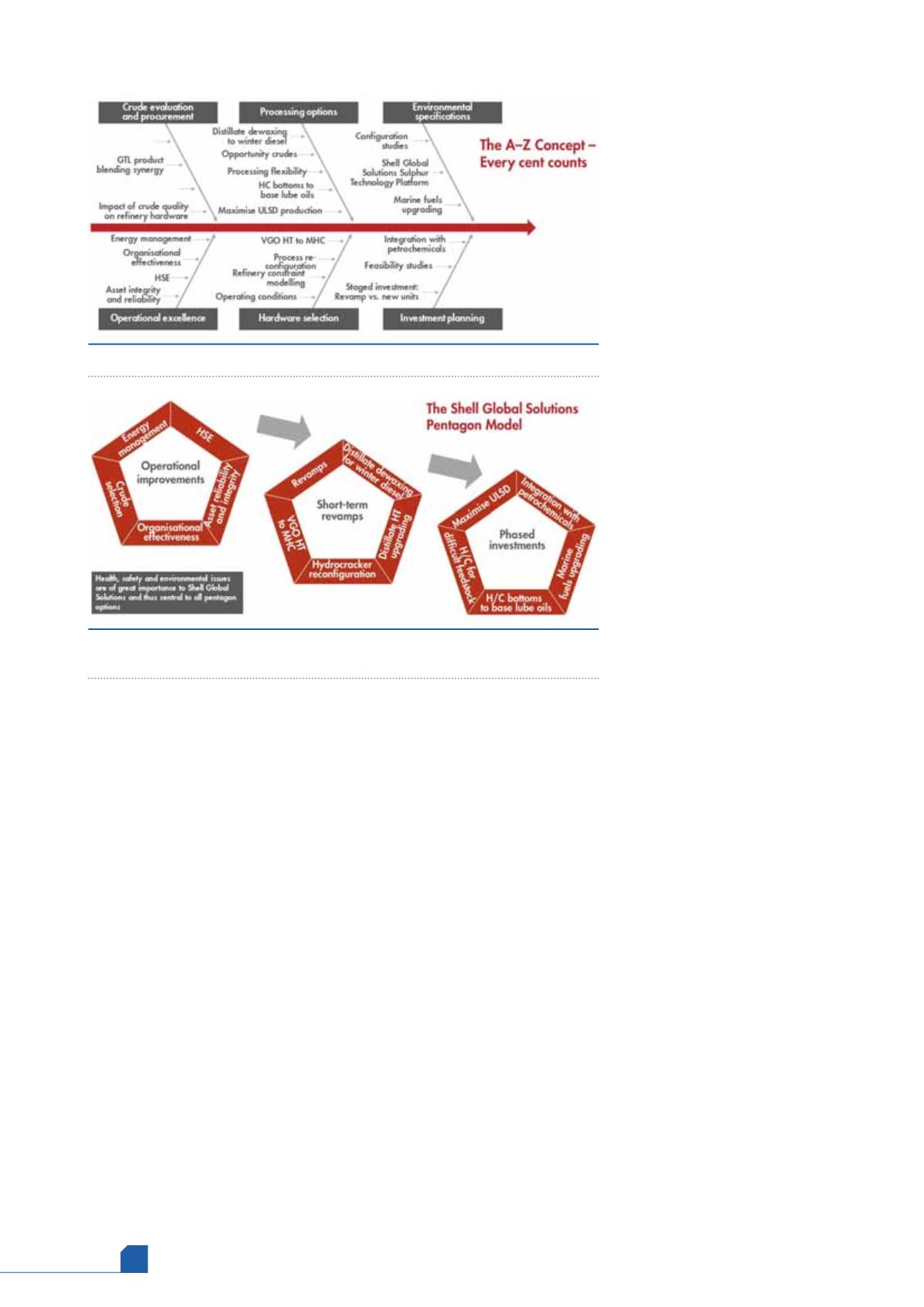
March
2017
HYDROCARBON
ENGINEERING
30
refinery operator assembles the right team for this
phase and that the team can provide all the
necessary skills. Experienced partners, such as
licensors, project management consultants, front
end engineering design (FEED) contractors,
engineering, procurement and construction (EPC)
contractors, and joint venture partners, will be
essential to the success of the project.
Every project presents different challenges and
opportunities. Operators must select and adapt the
process that best fits their company’s culture,
internal capabilities, decision and approval
processes, in-country resources and technical skills.
The goal of accelerated project delivery is only
achieved by examining, challenging and improving
the processes and habits that are the norm within a
company.
Swift progress from concept to startup requires
clear expectations, an efficient execution plan and
the selection of reliable technology that will deliver
what is needed on time and on budget. One of the
most effective ways to achieve this is to encourage
close collaboration between the refinery team and
the service suppliers with agreed and aligned goals.
This approach has repeatedly been shown to deliver
the best project startups. The startup method
offered by Shell Global Solutions can have a
positive influence on project profitability and
payback time for investors.
Adopting global best practices
helps operators to achieve
efficient commissioning and
successful startup, and can
deliver multi-million dollar
savings.
Operation: achieving
and sustaining
operational
excellence
The A – Z Concept used by
Shell Global Solutions (Figure 3)
shows that there is scope for
refiners to make improvements
right across the value chain,
from crude selection studies
that can introduce a lower cost
crude diet, to more complex
projects such as adding
dewaxing capabilities; feeding
hydrocrackers with alternative
feedstock blends using deep
flash distillation capabilities;
solvent deasphalting products
(demetallised oils); or
integration with
petrochemicals.
There are many options for
operators when it comes to
adjusting how their refinery
complex runs. High levels of reliability deliver strong
margins, but operators can also make efforts to
reduce operational expenditure and to introduce
new opportunities. These will involve decisions
about which crude to process and the value of
adding complexity compared with upgrading existing
hardware through a revamp.
Strong leadership will keep a refinery
competitive while market conditions change and
new opportunities emerge. The Shell Global
Solutions Pentagon model (Figure 4) provides a
roadmap for implementing the A – Z projects and
enhancing competitiveness.
The Pentagon model focuses on implementation
in three key areas: operational improvements,
short-term revamps and phased investments.
The first step in the Pentagon diagram
encourages operational improvements such as
reliability and energy management projects that
require small capital investments to maximise value
from the existing assets. For this step, Shell Global
Solutions has seen improvements ranging from
US$0.1 to 1/bbl. The next step is to consider how
revamps could help to generate increased value.
Revamps can offer substantial gains for relatively
modest investments, and the returns from these can
help to fund any larger capital projects that the
operator is planning as part of a phased investment.
Figure 3.
Options for refinery improvements across the value chain.
Figure 4.
Areas where refinery operators must display leadership and
foresight in order to enhance competitiveness and profitability.








